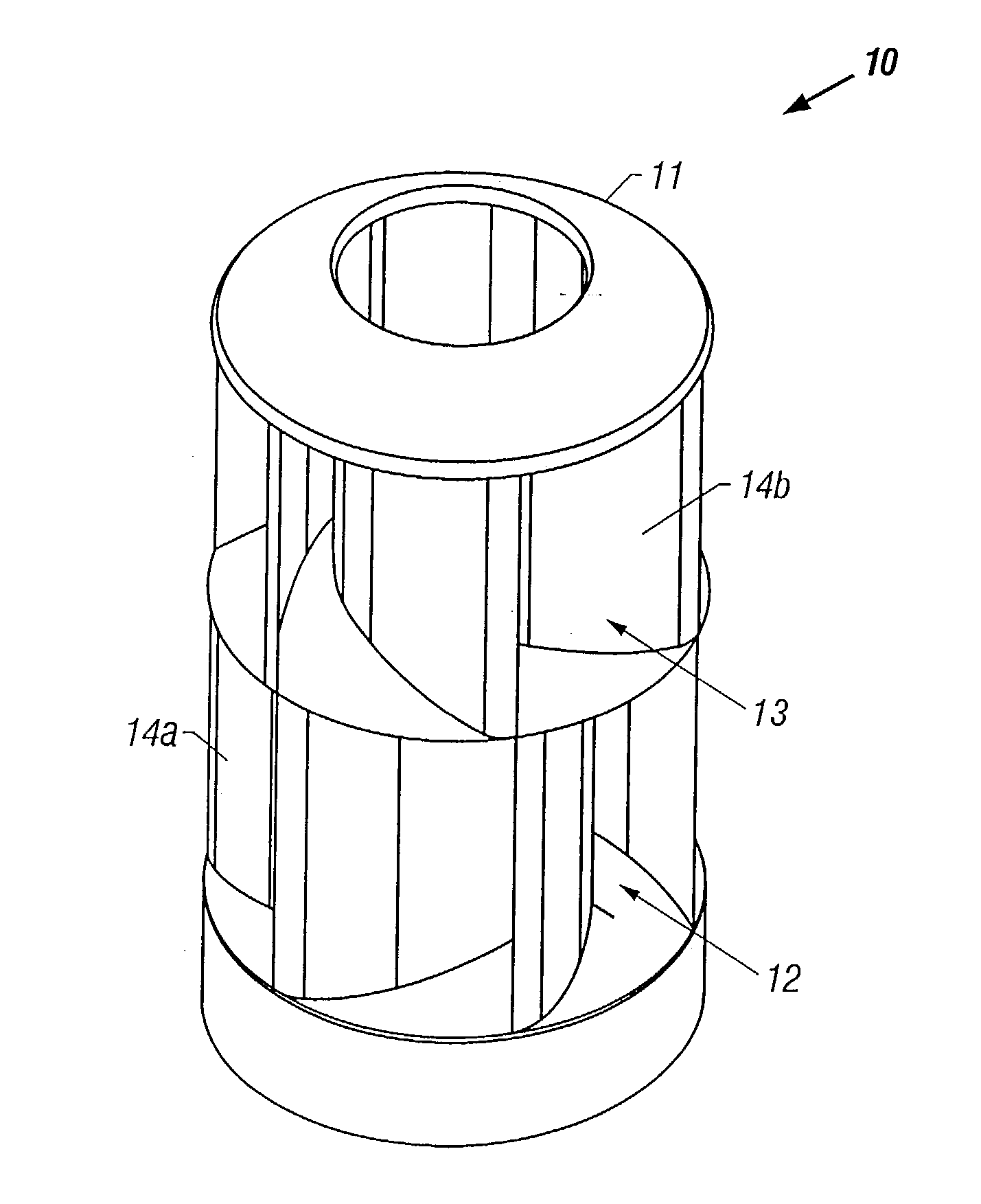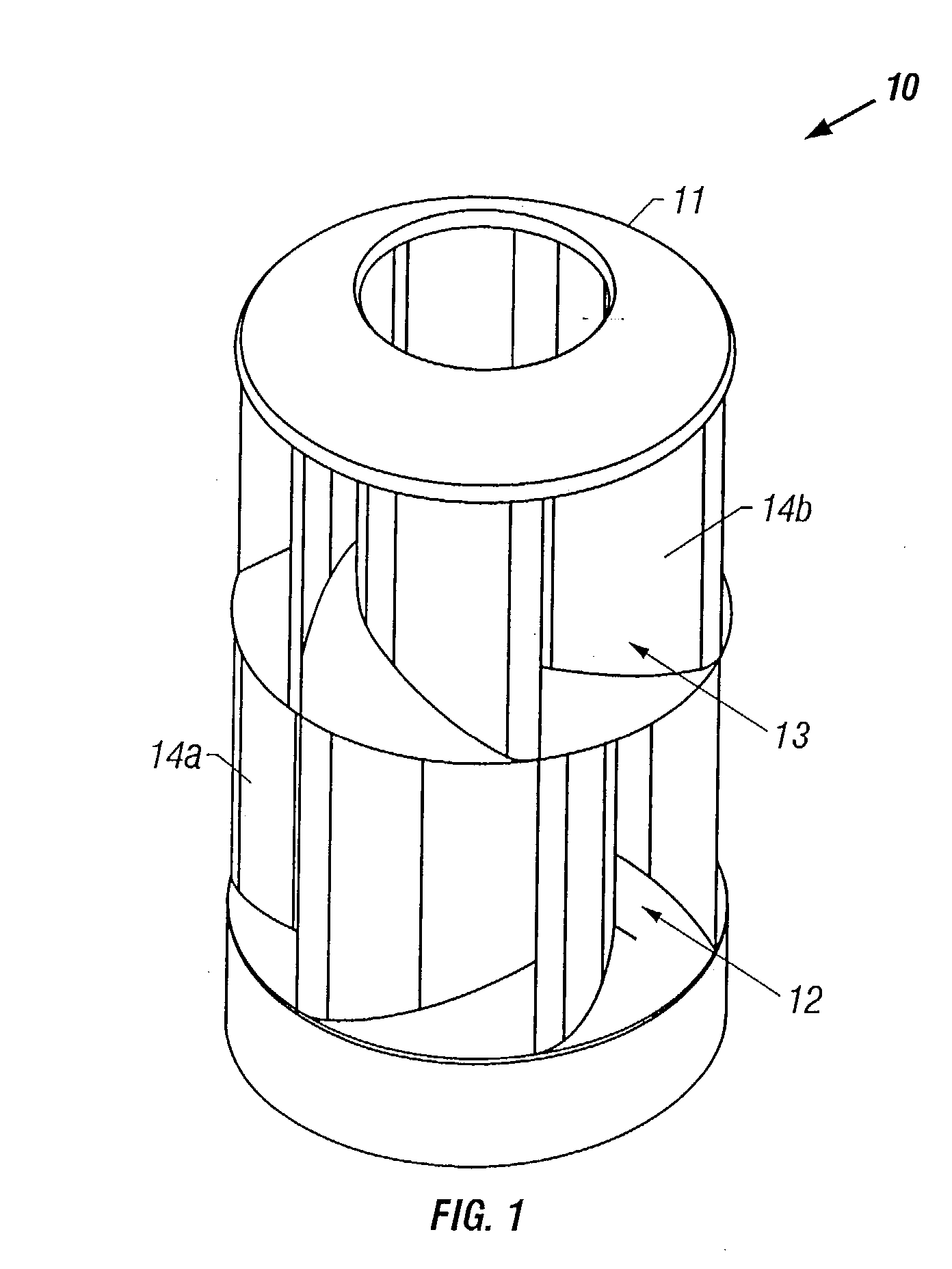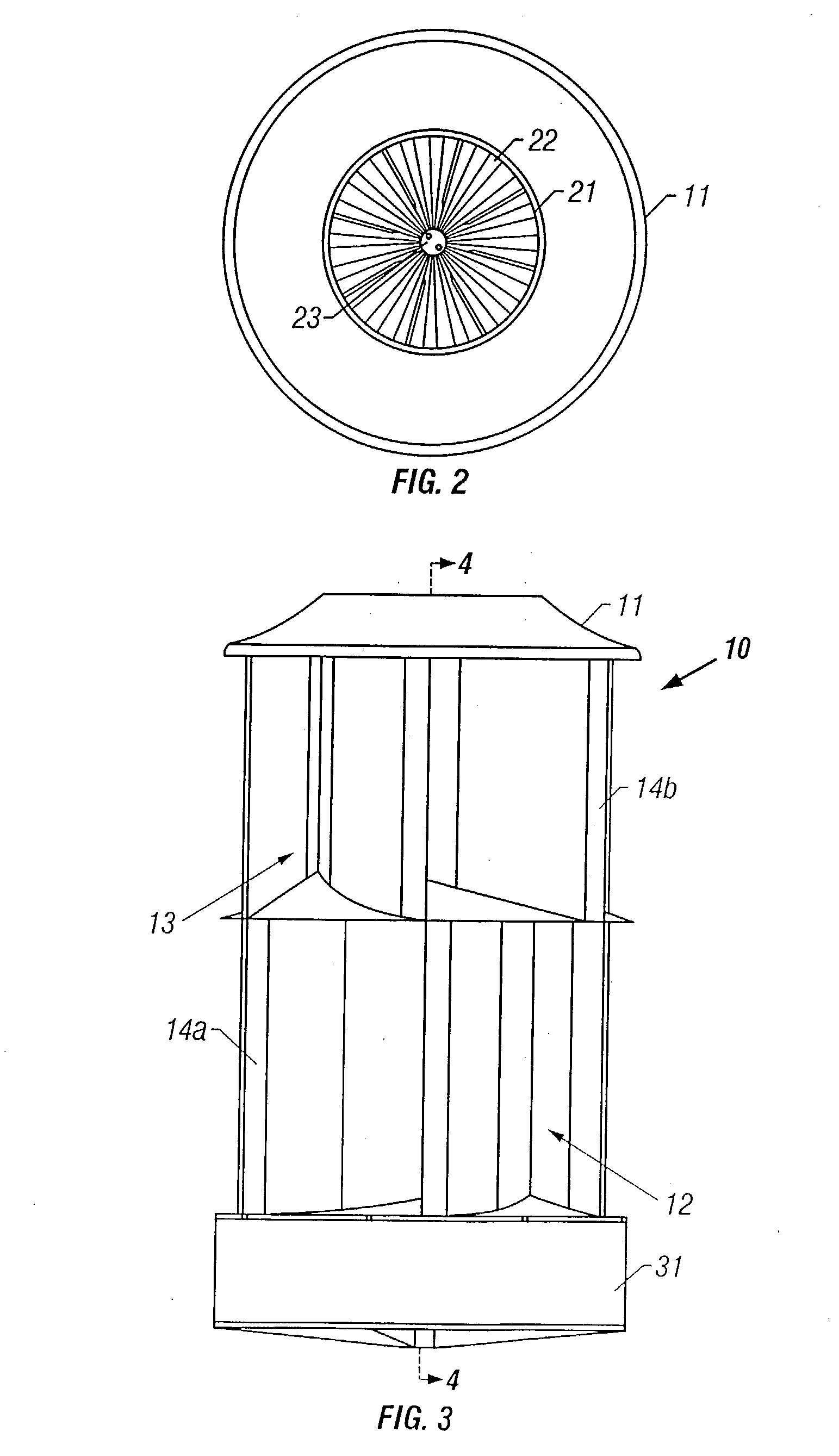Fluid-powered energy conversion device
a technology of flue-powered energy and energy conversion device, which is applied in the direction of renewable energy generation, electric generator control, greenhouse gas reduction, etc., can solve the problems of large permanent environmental changes, large cost, and large size of wind-powered devices, and achieves large-scale environmental changes. , the effect of reducing the number of wind-powered devices
- Summary
- Abstract
- Description
- Claims
- Application Information
AI Technical Summary
Benefits of technology
Problems solved by technology
Method used
Image
Examples
Embodiment Construction
[0025] FIG. 1 is a perspective view of an embodiment of the present invention that converts wind energy to mechanical or electrical energy. The energy conversion device 10 includes a stationary cowling 11 surrounding an upstream annular chamber 12 and a downstream annular chamber 13. The cowling may be constructed of any suitable rigid material such as wood, plastic, metal, and so on. Furthermore, the cowling may be fabricated from a transparent material, making the device visually unobtrusive. In the preferred embodiment of the present invention, the cowling is cylindrical and is constructed of a high-grade, ultraviolet-protected plastic.
[0026] The cowling 11 includes a plurality of longitudinal baffles that are curved and arranged in a toroidal pattern. Upstream baffles 14a are mounted in the upstream annular chamber 12, and downstream baffles 14b are mounted in the downstream annular chamber 13. In the preferred embodiment of the present invention, approximately six toroidal long...
PUM
 Login to View More
Login to View More Abstract
Description
Claims
Application Information
 Login to View More
Login to View More - R&D
- Intellectual Property
- Life Sciences
- Materials
- Tech Scout
- Unparalleled Data Quality
- Higher Quality Content
- 60% Fewer Hallucinations
Browse by: Latest US Patents, China's latest patents, Technical Efficacy Thesaurus, Application Domain, Technology Topic, Popular Technical Reports.
© 2025 PatSnap. All rights reserved.Legal|Privacy policy|Modern Slavery Act Transparency Statement|Sitemap|About US| Contact US: help@patsnap.com



